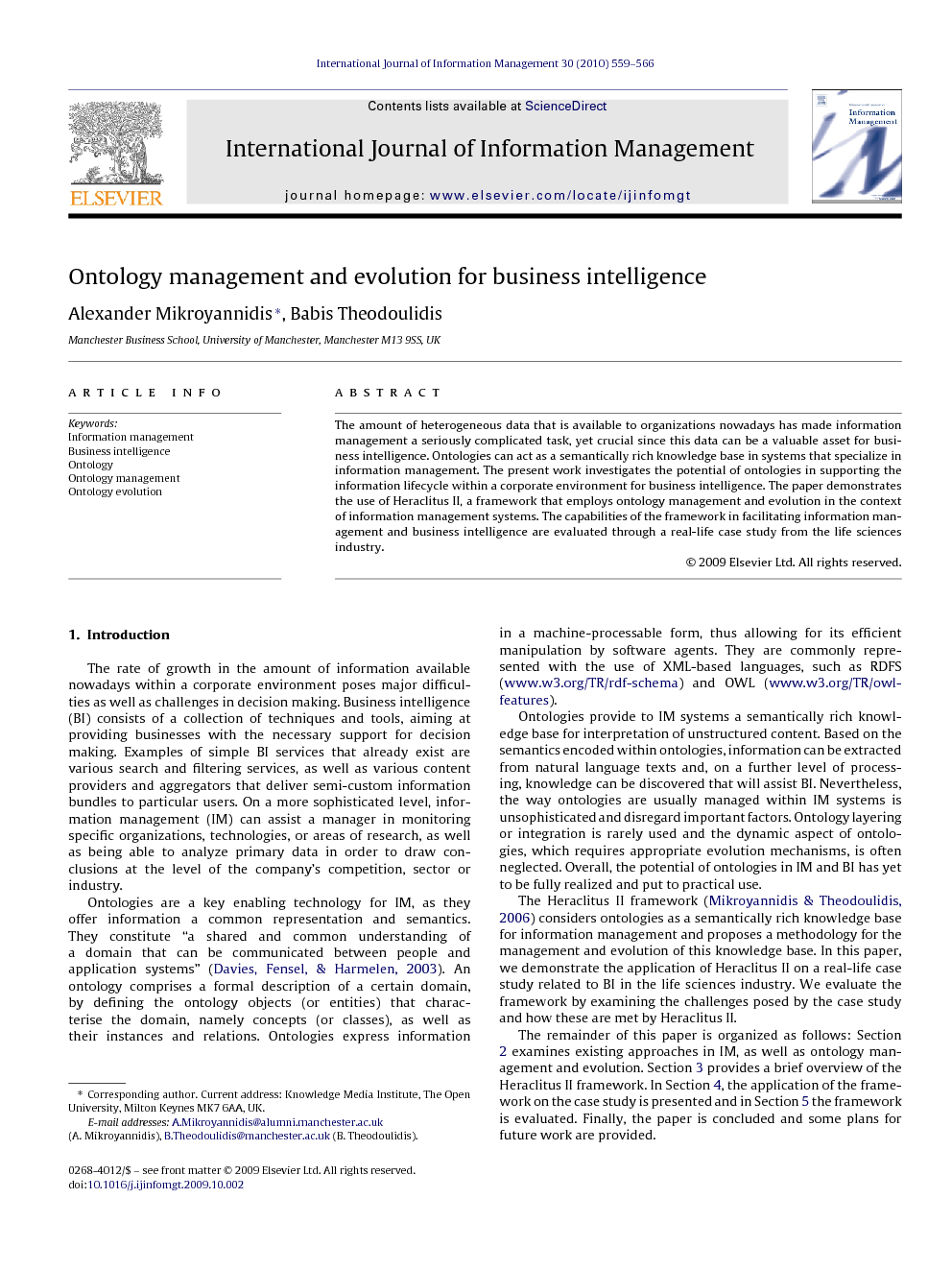ترجمه فارسی عنوان مقاله
مدیریت و سیر تکاملی هستی شناسی برای هوش کسب و کار(هوش تجاری)
عنوان انگلیسی
Ontology management and evolution for business intelligence
| کد مقاله | سال انتشار | تعداد صفحات مقاله انگلیسی |
|---|---|---|
| 681 | 2010 | 8 صفحه PDF |
منبع

Publisher : Elsevier - Science Direct (الزویر - ساینس دایرکت)
Journal : International Journal of Information Management, Volume 30, Issue 6, December 2010, Pages 559–566
ترجمه کلمات کلیدی
مدیریت اطلاعات - هوش کسب و کار -
هستی شناسی - مدیریت هستی شناسی - سیر تکاملی هستی شناسی -
کلمات کلیدی انگلیسی

